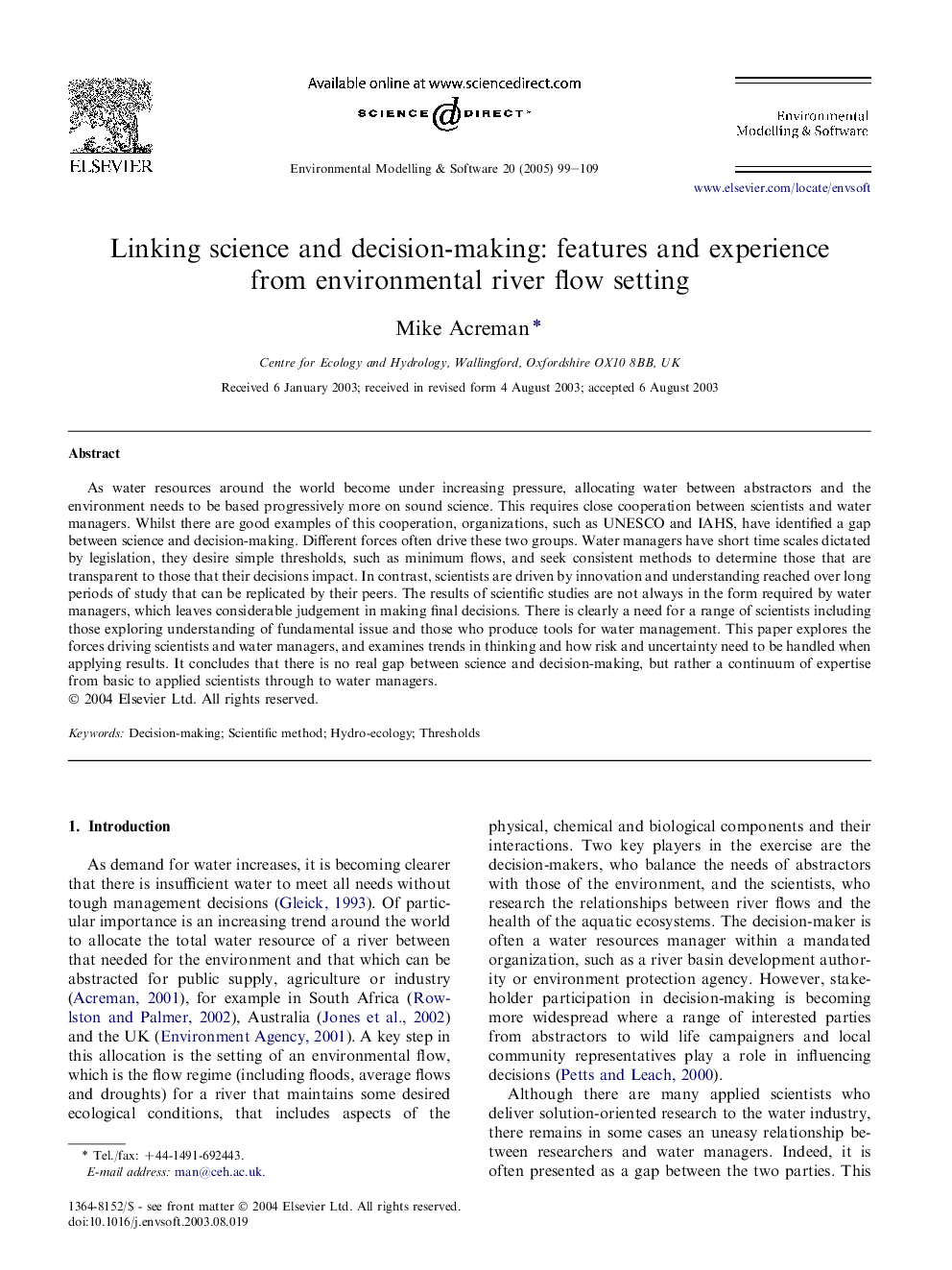| Article ID | Journal | Published Year | Pages | File Type |
|---|---|---|---|---|
| 10370990 | Environmental Modelling & Software | 2005 | 11 Pages |
Abstract
As water resources around the world become under increasing pressure, allocating water between abstractors and the environment needs to be based progressively more on sound science. This requires close cooperation between scientists and water managers. Whilst there are good examples of this cooperation, organizations, such as UNESCO and IAHS, have identified a gap between science and decision-making. Different forces often drive these two groups. Water managers have short time scales dictated by legislation, they desire simple thresholds, such as minimum flows, and seek consistent methods to determine those that are transparent to those that their decisions impact. In contrast, scientists are driven by innovation and understanding reached over long periods of study that can be replicated by their peers. The results of scientific studies are not always in the form required by water managers, which leaves considerable judgement in making final decisions. There is clearly a need for a range of scientists including those exploring understanding of fundamental issue and those who produce tools for water management. This paper explores the forces driving scientists and water managers, and examines trends in thinking and how risk and uncertainty need to be handled when applying results. It concludes that there is no real gap between science and decision-making, but rather a continuum of expertise from basic to applied scientists through to water managers.
Related Topics
Physical Sciences and Engineering
Computer Science
Software
Authors
Mike Acreman,
